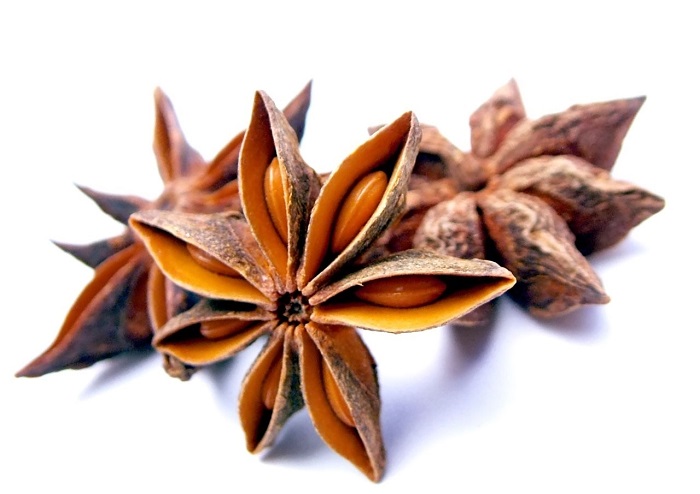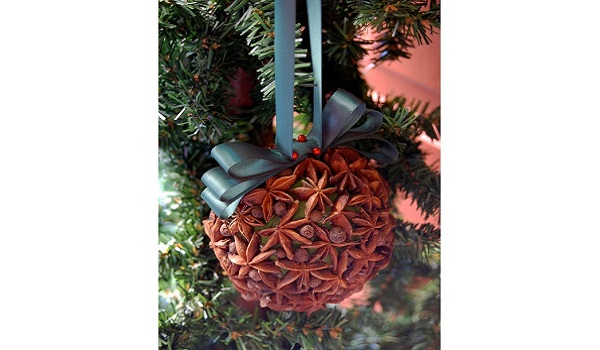Main Name: Anise
Biological Name: Pimpinella anisum
Names in Other Languages: Anís (Spanish), Anis (French), Anýz (Czech), Choti saunf, Vilayati saunf (Hindi), Anisu, Magambu (Tamil), Shombu (Malayalam), Kuppi soptu (Telugu), Variyali (Gujarati), Saph (Bengali), Badishep, Shauf (Marathi), Sop, Juani (Oriya), Valaiti sounf (Punjabi), Anisuan (Urdu)
Biological Name: Pimpinella anisum
Names in Other Languages: Anís (Spanish), Anis (French), Anýz (Czech), Choti saunf, Vilayati saunf (Hindi), Anisu, Magambu (Tamil), Shombu (Malayalam), Kuppi soptu (Telugu), Variyali (Gujarati), Saph (Bengali), Badishep, Shauf (Marathi), Sop, Juani (Oriya), Valaiti sounf (Punjabi), Anisuan (Urdu)
If you are constantly suffering from gastric problems, it’s high time that you consider it seriously. For, its chronic occurrence can lead to severe conditions, like indigestion, flatulence, acute chest pain, stomach aches, muscular cramps and pains. Besides, in the long run, it can cause heaviness, hypertension, even problems with hair loss and reduced eyesight. And if you fear visiting the doctor every now and then, pick up a home remedy that will provide you instant relief and prevent you doctor visits, in particular. Add a few anise seeds in your food and look for positive results in a couple of days. Well, anise seed is an annual flowering plant, growing to an average height of 30 to 50 cm. The seeds, also known as aniseed, are actually the fruits or seed pods, ground-gray to grayish-brown in color, oval in shape, and 3 to 5 mm in length, attached with a short stalk. It is revered for its sweet odor and pleasant aromatic taste, which makes it a great flavoring agent in several delicacies. As a culinary herb, it is extensively used in curries, bread, soups, baked goods, dried figs, desserts, cream cheese, pickles, egg dishes and non-alcoholic and alcoholic beverages. Besides, it has some amazing health promoting properties with magnificent advantages. Check out the several nutritious benefits of using anise as a flavoring condiment in your dishes, in the sections below.
History
History indicates that anise has been in cultivation in Egypt for the last 4000 years. An evidence of its earliest cultivation is an Egyptian papyrus dating back to about 2000 BC. Anise has also been mentioned in Pharaonic medical texts where it was used as a diuretic to treat digestive problems and relieve toothaches. Hippocrates stated that anise can be helpful in clearing the respiratory system. Even though it is prominently used in food, but its licorice flavor has been used medicinally as a treatment for abdominal upsets and intestinal gas and as a breath freshener as well. Anise probably originated in the Mediterranean area, but was extensively used in South America. It was brought to the New World in the 16th century by Spanish colonists. Since then, it has been used by Latin Americans as a culinary item and a medicinal herb. During medieval times, anise was used as a gargle, combined with honey and vinegar, to treat tonsillitis. Anise was appreciated by Pliny who recommended chewing it to get rid of “morning breath” and advised people to keep it near the bed for preventing bad dreams. Around the 16th century, Europeans used anise to bait mice and trap them.
History indicates that anise has been in cultivation in Egypt for the last 4000 years. An evidence of its earliest cultivation is an Egyptian papyrus dating back to about 2000 BC. Anise has also been mentioned in Pharaonic medical texts where it was used as a diuretic to treat digestive problems and relieve toothaches. Hippocrates stated that anise can be helpful in clearing the respiratory system. Even though it is prominently used in food, but its licorice flavor has been used medicinally as a treatment for abdominal upsets and intestinal gas and as a breath freshener as well. Anise probably originated in the Mediterranean area, but was extensively used in South America. It was brought to the New World in the 16th century by Spanish colonists. Since then, it has been used by Latin Americans as a culinary item and a medicinal herb. During medieval times, anise was used as a gargle, combined with honey and vinegar, to treat tonsillitis. Anise was appreciated by Pliny who recommended chewing it to get rid of “morning breath” and advised people to keep it near the bed for preventing bad dreams. Around the 16th century, Europeans used anise to bait mice and trap them.

http://www.redstickspice.com/products/star-anise
Health Benefits of Anise
- Anise is anti-spasmodic in nature and is very effective in several situations or ailments caused by spasms, such as cramps, coughs, aches, diarrhea, nervous afflictions and convulsions.
- Anise contains several essential minerals like calcium, iron, copper, potassium, manganese zinc and magnesium. Potassium present in anise is an important constituent of cell and body fluids that helps control heart rate and blood pressure.
- Anise is rich in copper which is a cofactor for many vital enzymes, including cytochrome C-oxidase and superoxide dismutase. It is highly essential for the production of red blood cells.
- Anise oil has narcotic and sedative properties which help in calming down epileptic and hysteric attacks by slowing down the process of circulation, respiration and nervous response. It is also quite effective in sedating nervous afflictions, hyper reactions and convulsions.
- Anise or anise oil has anti-septic properties and can be very effective in protecting against infections and septic. It further helps in accelerated healing of wounds.
- Anise can provide immense relief from rheumatic and arthritic pains by stimulating blood circulation and reducing sensation of pain in the affected areas.
- Anise is commonly used for promoting digestion. It is a common practice to chew anise seeds or serve desserts containing anise to aid digestion, especially after a heavy meal or feast.
- Anise has narcotic or numbing effects and can be used as a sedative for anxiety, nervous afflictions, depression, anger, stress etc. It is also used against insomnia due to its tranquilizing and relaxing effects.
- The antibacterial and antimicrobial properties of anise make it an effective mouthwash and it fights against bad breath and other oral inflammations.
- The seeds are extremely beneficial for both men and women by increasing libido. They are useful for reducing menstrual pains, inducing menstruation and treating cardiovascular functions, frigidity and impotence.
- Anise is a great stimulator as it helps in stimulating circulation and providing relief from rheumatism and arthritis. It also boosts the secretion of enzymes and hormones, thereby stimulating the whole metabolism. As such, it stimulates the nervous system and brain to make us more active and alert.
- Anise oil acts as a good expectorant by helping in loosening cough or phlegm deposited in the lungs and respiratory tracts, thereby bringing relief from cough, heaviness in the chest, breathing troubles, asthma, bronchitis, congestion and other respiratory disorders.
Anise Nutrition FactsAmount: 100 gWeight: 100 g
| Nutrients | Amount |
| Basic Components | |
| Proteins | 18 g |
| Water | 9.5 g |
| Ash | 7 g |
| Calories | |
| Total Calories | 337 |
| Calories From Carbohydrates | 145 |
| Calories From Fats | 133 |
| Calories From Proteins | 59 |
| Carbohydrates | |
| Total Carbohydrates | 50 g |
| Dietary Fiber | 15 g |
| Fats & Fatty Acids | |
| Total Fat | 16 g |
| Saturated Fat | 586 mg |
| Monounsaturated Fat | 9.8 g |
| Polyunsaturated Fat | 3.2 g |
| Omega-6 Fatty Acids | 3.2 g |
| Vitamins | |
| Vitamin A | 311 IU |
| Vitamin C | 21 mg |
| Thiamin | 340 mcg |
| Riboflavin | 290 mcg |
| Niacin | 3.1 mg |
| Vitamin B6 | 650 mcg |
| Folate | 10 mcg |
| Pantothenic Acid | 797 mcg |
| Minerals | |
| Calcium | 646 mg |
| Iron | 37 mg |
| Magnesium | 170 mg |
| Phosphorus | 440 mg |
| Potassium | 1.4 g |
| Sodium | 16 mg |
| Zinc | 5.3 mg |
| Copper | 910 mcg |
| Manganese | 2.3 mg |
| Selenium | 5 mcg |

How many calories in anise (per 100 gm)Anise has about 337 calories per 100 gm of weight.
How to Buy Anise
- Anise is available both in dried as well as grounded form in the markets all year around. For authenticity, always buy anise seeds from organic herb stores. It is advisable that you buy them in small quantities as they lose their flavor quickly.
- If crushed between index and thumb fingers, fresh seeds should emanate rich aroma. Avoid seeds that have broken tips or those from old stocks as they contain less essential oil.
Anise Storage Tips
- Store anise in airtight containers in a cool, dry place and away from direct sunlight.
- When stored properly, anise stays fresh for about twelve months, but it is best to use it as early as possible since it has the tendency of losing its flavor quickly.



